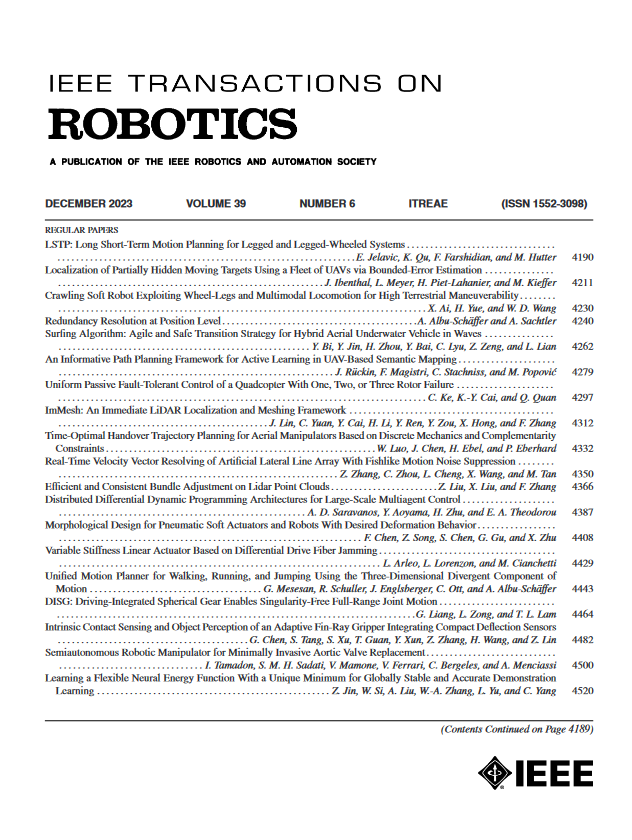A Black-Box Physics-Informed Estimator Based on Gaussian Process Regression for Robot Inverse Dynamics Identification
IF 9.4
1区 计算机科学
Q1 ROBOTICS
引用次数: 0
Abstract
Learning the inverse dynamics of robots directly from data, adopting a black-box approach, is interesting for several real-world scenarios where limited knowledge about the system is available. In this article, we propose a black-box model based on Gaussian process (GP) regression for the identification of the inverse dynamics of robotic manipulators. The proposed model relies on a novel multidimensional kernel, called基于高斯过程回归的黑盒物理信息估计器,用于机器人反动力学识别
采用黑盒方法直接从数据中学习机器人的反动力学,对于现实世界中一些系统知识有限的场景很有意义。在本文中,我们提出了一种基于高斯过程(GP)回归的黑盒模型,用于识别机器人机械手的逆动力学。该模型依赖于一种新颖的多维核,即拉格朗日启发多项式(LIP)核。LIP 核基于两个主要思想。首先,我们不直接对逆动力学成分建模,而是将系统的动能和势能作为 GP 建模。通过应用线性算子下 GP 的特性,从能量的 GP 先验推导出反动力学成分的 GP 先验。其次,在能量先验定义方面,我们证明了动能和势能的多项式结构,并推导出一个多项式核来编码这一属性。因此,所提出的模型还可以估算动能和势能,而无需对这些量进行任何标注。模拟和两个真实机器人机械手(即 7 DOF 的 Franka Emika Panda 和 6 DOF 的 MELFA RV4FL)上的结果表明,所提出的模型在准确性、通用性和数据效率方面都优于基于高斯过程和神经网络的最先进的黑盒子估算器。在 MELFA 机器人上进行的实验还表明,尽管对先验信息的要求较低,我们的方法仍能达到与基于模型的微调估计器相当的性能。建议模型的代码可公开获取。
本文章由计算机程序翻译,如有差异,请以英文原文为准。
求助全文
约1分钟内获得全文
求助全文
来源期刊

IEEE Transactions on Robotics
工程技术-机器人学
CiteScore
14.90
自引率
5.10%
发文量
259
审稿时长
6.0 months
期刊介绍:
The IEEE Transactions on Robotics (T-RO) is dedicated to publishing fundamental papers covering all facets of robotics, drawing on interdisciplinary approaches from computer science, control systems, electrical engineering, mathematics, mechanical engineering, and beyond. From industrial applications to service and personal assistants, surgical operations to space, underwater, and remote exploration, robots and intelligent machines play pivotal roles across various domains, including entertainment, safety, search and rescue, military applications, agriculture, and intelligent vehicles.
Special emphasis is placed on intelligent machines and systems designed for unstructured environments, where a significant portion of the environment remains unknown and beyond direct sensing or control.
 求助内容:
求助内容: 应助结果提醒方式:
应助结果提醒方式:


